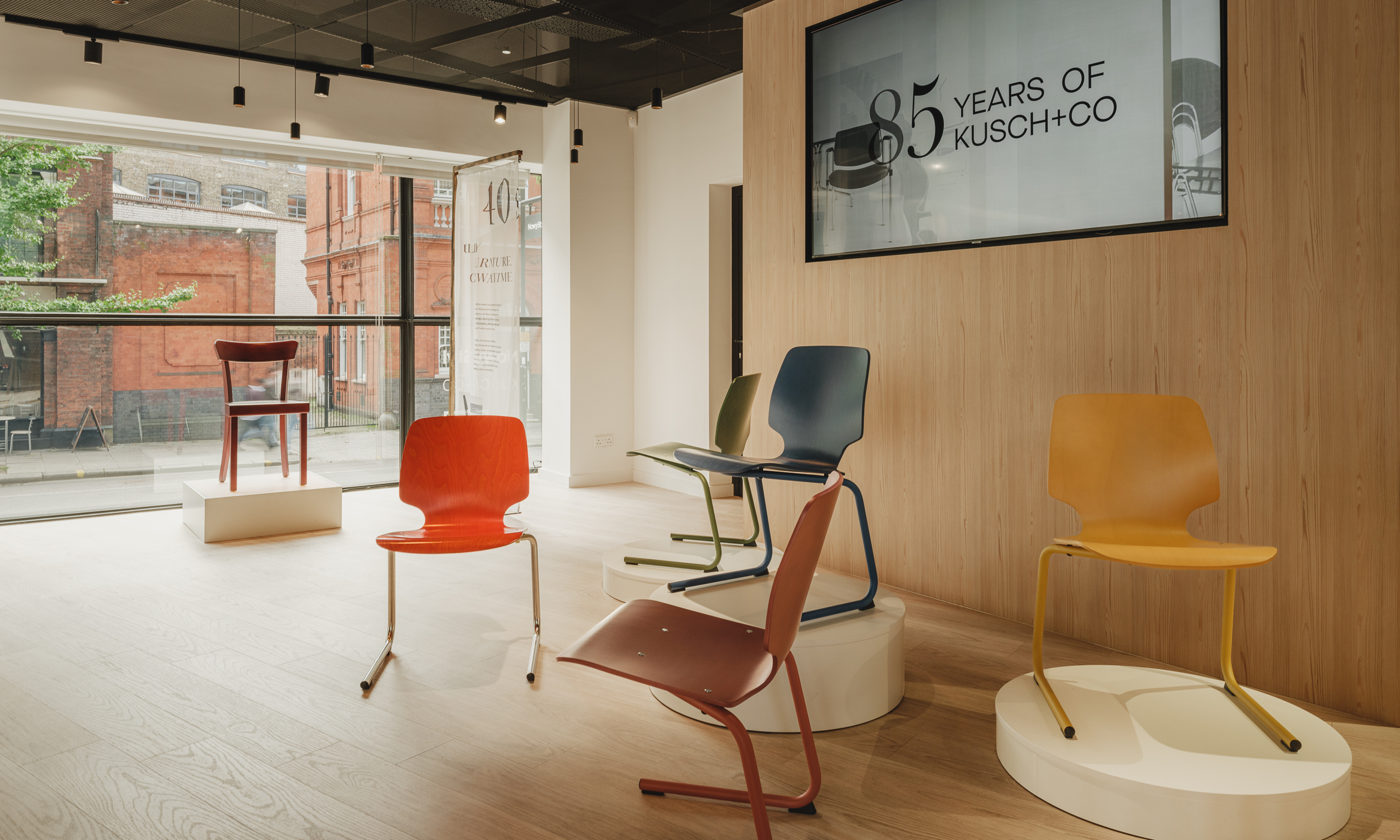
Kusch+Co’ European exhibition opens in London presenting for the first time, captivating furniture icons from its archive collection before commencing its European tour.
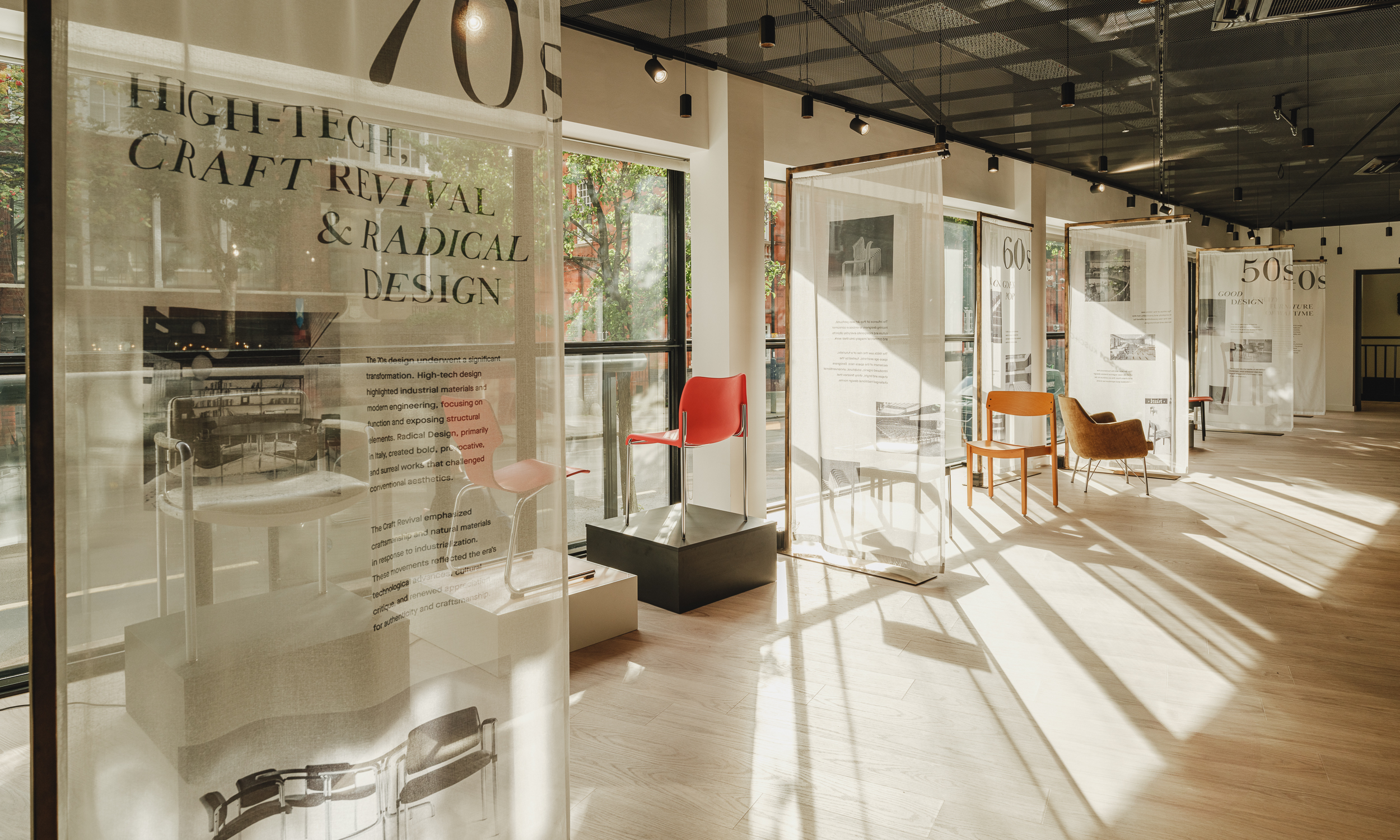
Kusch+Co’s highly anticipated exhibition, ‘Designs Beyond Time: 85 Years of Kusch+Co,’ has opened in London to widespread acclaim, marking a significant moment in the brand’s history. This unique showcase presents 26 iconic furniture designs expertly selected from the Kusch+Co archives which span designs from the 1940s to the 2020s. A design journey of materials, manufacture and innovation that captivate attendees with its immersive exploration of Kusch+Co’s design evolution, setting the stage for its upcoming European tour.
Held at the prestigious Kusch+Co EC1 showroom in partnership with Nowy Styl, the exhibition celebrates a landmark event in the design world. Attendees are led on an engaging journey through the decades, experiencing first-hand the brand’s impressive history, craftsmanship, and the innovative spirit that has consistently pushed the boundaries of interior design
Among the stunning snapshots of history on display is the renowned Colani chair, designed by Prof. Luigi Colani. The seating he designed in this period appeals with its unique use of organic forms. His creations still hold the same fascination today as they did back then. Additionally 2700, a bold creation by Kusch+Co Designteam from 1956, known for its curvaceous lines and futuristic aesthetic. Another standout is the 1100 Duo by Architekten Gruppe 4, designed in 1964, which exemplifies minimalist elegance and modern functionality. These pieces, along with many others, highlight Kusch+Co’s timeless commitment to pushing design boundaries while maintaining a deep connection to craftsmanship and innovation.
The London opening reception was moderated by esteemed design and craft journalist, Grant Gibson, who together with Kusch+Co’s Creative Director Robert de la Rui walked through the ‘decades’ of furniture pieces, illuminated the audience with unique nuances of each piece aligned with the trends and innovation of each decade that inspired these iconic pieces.
‘There aren’t too many companies that can claim an historic portfolio that boasts the names of such diverse designers as Dieter Rams, Jorge Pensi, Luigi Colani and, most recently, Karim Rashid’, says Gibson, ‘The show combined this sense of eclecticism with quality of manufacturing. It was an unexpected treat’.
Additionally, Robert de le Roi, Creative Director at Kusch+Co commented “‘Designs Beyond Time: 85 Years of Kusch+Co’ is a celebration of not only our legacy but also the pursuit of innovation that defines our brand. This exhibition marks a pivotal moment in Kusch+Co’s history, bringing together decades of craftsmanship, design evolution, and material ingenuity. To see our past and future come to life in such a profound way is proof to the vision of Kusch+Co.”
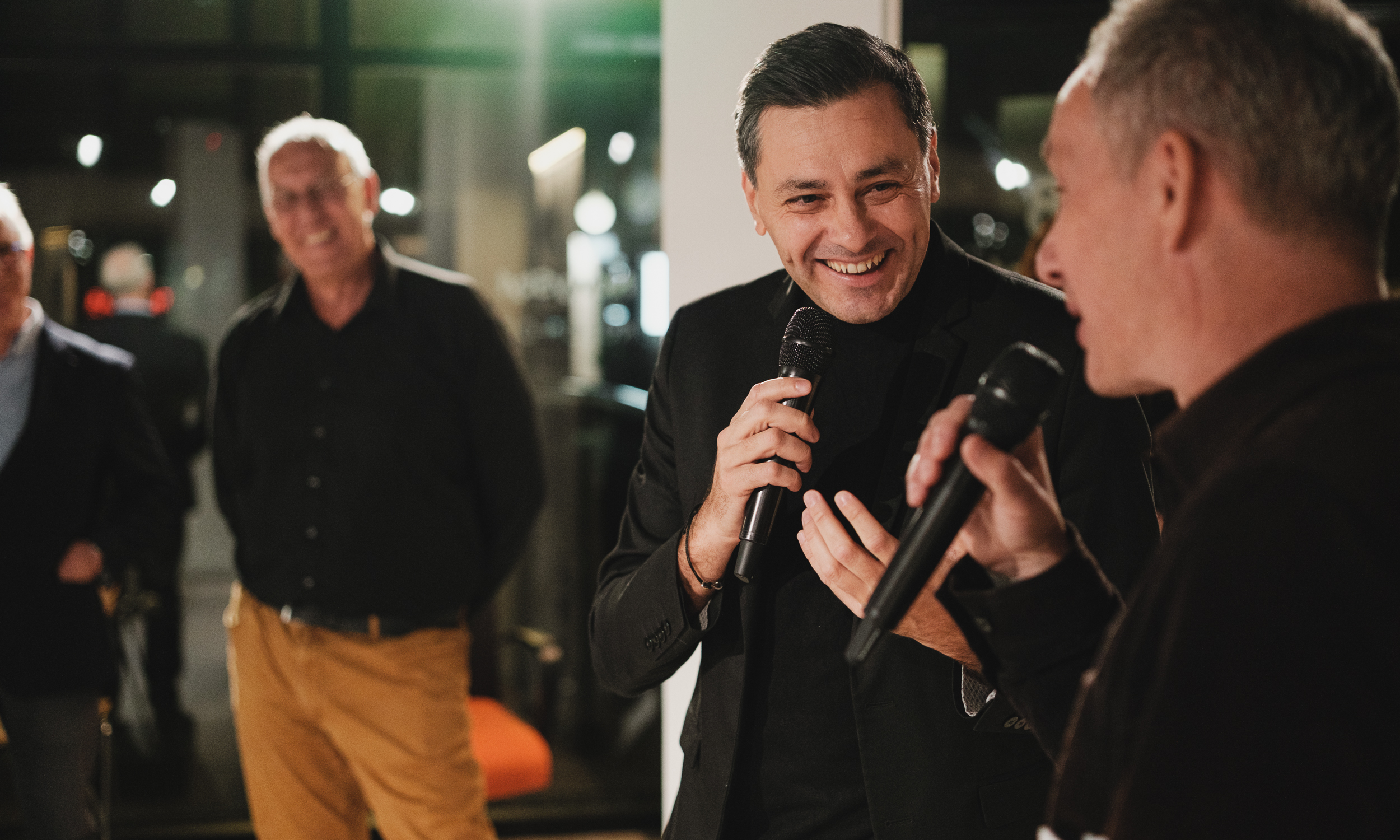
From its humble beginnings as a family business founded by Ernst Kusch in 1939, to becoming a global leader in seating and interior solutions, Kusch+Co’s remarkable heritage was brought to life through iconic products, key design milestones, and expertly curated historical pieces. The exhibition beautifully transports visitors back in time, allowing them to appreciate the cultural and historical contexts that have shaped the company’s design ethos over the years.
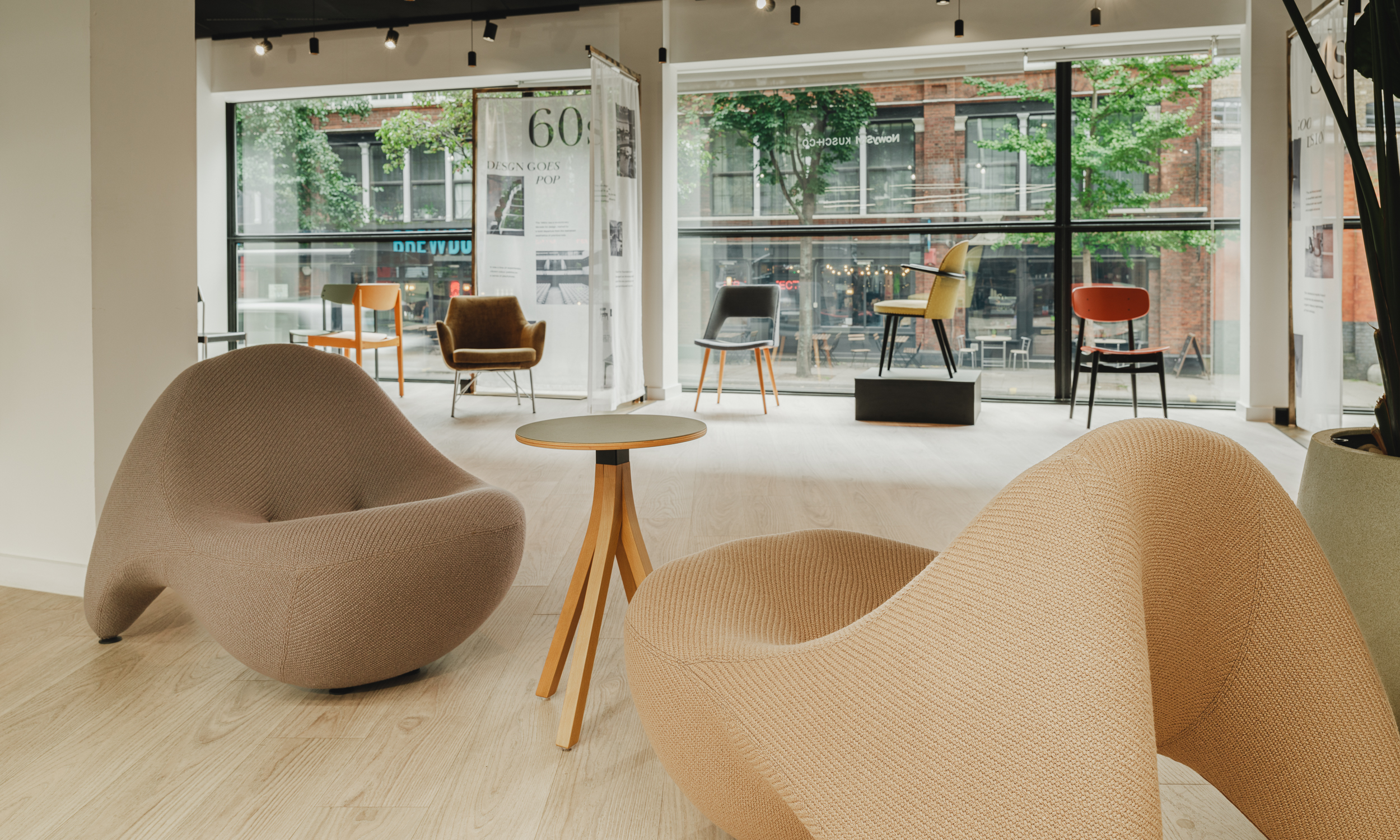
With this exhibition, Kusch+Co not only celebrates its rich past but highlights its continued commitment to innovation and design excellence. The showcase reaffirms the brand’s enduring influence on the design industry, resonating with both industry veterans and newcomers alike. The overwhelmingly positive response underscores Kusch+Co’s ability to blend tradition with modernity, solidifying its place as a leader in the global design landscape.
When the London chapter closes, the ‘Designs Beyond Time’ exhibition will prepare for the next stops on its European tour, promising to inspire and engage new audiences across the continent. Kusch+Co remains dedicated to honouring its legacy while forging ahead with bold new designs that will shape the future of the industry for years to come.
‘Designs Beyond Time: 85 Years of Design Heritage’ Exhibition
Open until Friday 8th November 2024
Venue – Nowy Styl Kusch Showroom, 58 St John’s Sq, London EC1V 4JG
Opens in London before travelling onwards to other Kusch+Co European showrooms.
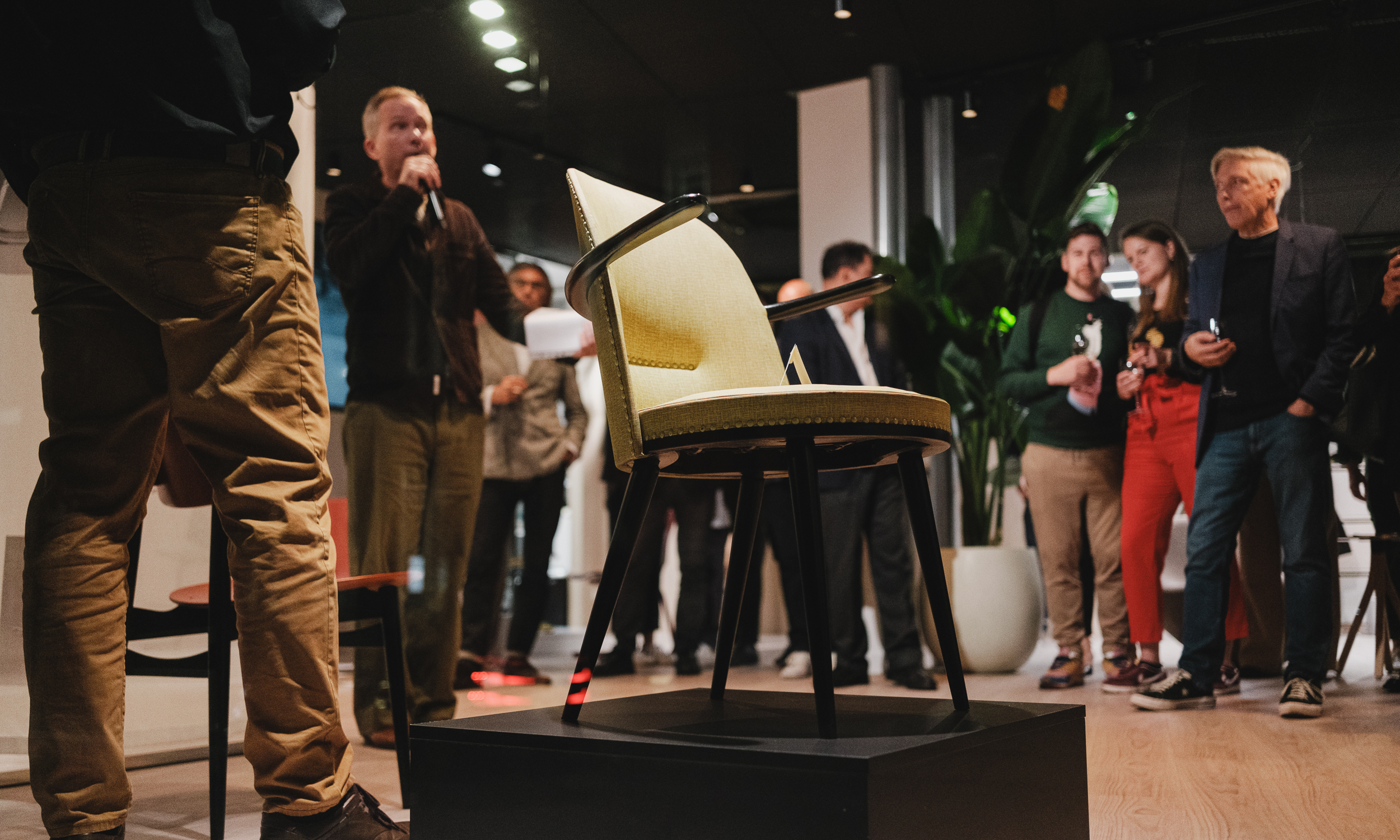
KEY DESIGN TIMELINES – (*) =not present at exhibition
1940s
- SERIES 100 Chair, designer Kusch+Co 193
1950s
- SERIES Rekord Chair, designer Kusch+Co, 1956
- SERIES 2700 Chair, designer Kusch+Co, 1956
- SERIES 40 Chair, designer University of Stuttgart, 1959
1960s
- SERIES Stockholm Chair, designer Eric Ekselius, 1961
- SERIES 31 H Chair, designer Hans Ohlsen, 1962
- SERIES 31 ST Chair, designer Dieter Kusch & Hans Ohlsen, 1962
- SERIES 2000 chair, designer Edlef Bandixen, 1963 (*)
- SERIES 1000 chair, designer Prof. Hans Ell, 1964
- SERIES 1100 Duo, designer Architekten Gruppe 4, 1964
- SERIES 2500 Chair, designer Prof. Hans Ell, 1965 (*)
1970’s
- SERIES 8200 armchair, designer Prof. Jørgen Kastholm, 1972
- SERIES 7300 Plenar series, designer Prof. Jørgen Kastholm, 1973
1980s
- SERIES 8300 armchair, designer Prof. Jørgen Kastholm, 1980
- SERIES Sóley Chair, designer Valdimar Hardarson, 1984
- SERIES 3300 Lotus, designers Hartmut Lohmeyer and Alexandra Ionescu, 1989
- SERIES 8600 Galaxy, chair, designer Prof. Hans U. Bitsch and Dip.Ing. Klaus Burger 1989
1990s
- SERIES 8400/8460 Ona Work Chair, designer Jorge Pensi, 1990
- SERIES 1800 Mikado’, developed by Walter Leeman, 1992
- SERIES 4000 RA 98 Chair, designer Prof. Dieter Rams, 1998
2000’s to present day
- SERIES 8480 Ronda, designer Jorge Pensi, 2005
- COLANI Chair, designer Prof. Luigi Colani,1969, reimagined 2005
- SERIES 1250 eTea Chair, designer Dieter Kusch, 2006
- SERIES 8080 Chair, designer Studio F.A. Porsche, 2015
- GENAYA, designer brodbeck-koepp design, 2023
- BOUND, designer Karim Rashid, 2024
A JOURNEY THROUGH THE DECADES
The 1940s
The exhibition begins with a reflection on the challenges of the 1940s. Amidst the hardships of World War II, Kusch+Co’s limited wartime production capabilities were symbolized by the creation of unique pieces including the ‘100’ chair in 1939; a sturdy and practical wooden chair testament to the brand’s enduring commitment to quality, even in the face of adversity. This chair sparked the foundation of Kusch+Co by Ernst Kusch which operated under the name of “Sauerland Stabil” at the time.
The 1950s
Kusch+Co introduced several iconic designs, including the space-saving and innovative ‘Rekord’ series in 1956; easy to disassemble a piece that swiftly became a global export hit. In the same year, the ‘2700’ indestructible all-round chair for bars, restaurants and dance halls was designed at a time when the popularity of dance halls had reached their peak. It was this decade that saw the first Kusch+Co chair conceived by external designers – the ‘40 Chair’ developed by a student group University of Stuttgart in 1959.
As the world moved into the post-war era, the 1950s brought an explosion of elegance and colour. This decade’s display will evoke the glamour and sophistication of the time, with brands such as Cristian Dior and Chanel setting trends in both fashion and furniture.
The 1960s
Kicking off the swinging 60’s was the ‘Stockholm’ chair by Eric Ekselius designed in 1961; a compact bar and lobby armchair that has lost nothing of its appeal. 1962 saw the development of Kusch+Co ‘s first wooden frame stacking chair, the ‘31 H’, by Hans Ohlsen. In the same year Hans also developed with Dieter Kusch the 31 ST, Kusch+Co ‘s first metal-frame chair in serial production. This decade saw first-time functionalities incorporated into the designs such as stack-ability and linking elements.
Kusch+Co embraced the spirit of the decade with groundbreaking designs like the ‘2000’ chair’ (*) by Edlef Bandixen in 1963, which sold over a million units up until 1994! Additionally, 1964 saw the ‘1100 Duo chair’ by Architekten Gruppe 4 achieve design patency as the first chair worldwide designed with a one-piece subframe,
Embracing the eras new materials the ‘1000’ chair by Prof. Hans Ell designed in 1964, was Germany’s first plastic contract chair with an injection-moulded polypropylene seat shell (28.000 units delivered to the Munich Olympic Games in 1972). Additionally, Prof. Hans Ell created ‘2500’ (*) in 1965, a chair often referred to as the ‘Church Chair Par Excellence’ that initially leaned to an ecclesiastical interior, with its oval frame and plywood backrest, a design that became the epitome of authentic design.
This energetic era was marked by bold experimentation, new materials and forms, and plastic as a new core manufacturing material, capturing key inspirations and influences including pop-art and the space race.
The 1970s
A decade of social change and cultural revolution, the 1970s saw Kusch+Co exploring new design frontiers. Boosted by the decade’s diverse influences, from the natural, free-spirited ethos of the hippies to the rebellious flair of punk, this decade saw a trend for the naturalness of raw materials and loose cuts used throughout this period.
Notable designs include the ‘8200’ armchair, created by Prof. Jørgen Kastholm in 1972 renowned for its narrow bending radii and foam-moulded seat and backrest pads. While another significant creation, the ‘7300 Plenar’ series, also by Prof. Jørgen Kastholm designed in 1973 gained prominence when it was chosen for the German Bundestag, where parliamentarians used these cantilever chairs in the “Wasserwerk” in Bonn.
The 1980s
This era’s display will capture the decade’s bold contrasts, from the glitz of disco to the sharp lines of corporate fashion bringing a visual clash of styles and the rise of powerful, professional women. Kusch+Co responded with designs that balanced strength and sophistication, such as the puristic and typical Kastholm ‘8300’ armchair by Prof. Jørgen Kastholm from 1980. The innovative and award-winning ‘Sóley’, the first folding chair of its kind globally with many hidden talents, was developed by designer Valdimar Hardarson and earned the title of ‘Chair of the Year 1984’.
The ‘3300 Lotus’, designed by Hartmut Lohmeyer and Alexandra Ionescu in 1989, featured a groundbreaking three-dimensional plywood backrest; an innovative design at the time. Also in 1989, the ‘8600 Galaxy’ was created through a collaboration between Prof. Hans U. Bitsch and Dipl.-Ing. Klaus Bürger, serving as a prime example of progressive and authentic design. The ‘10-meter Galaxy chair’, the world’s largest contract chair, was constructed in front of the Kusch+Co factory.
The 1990s
As the world entered the 1990s, minimalism and street style took centre stage. The exhibition highlights the understated elegance and practical design that defined the decade. Kusch+Co’s products like the ‘8400 Ona Work chair developed by Jorge Pensi in 1996 and the ‘4000 RA 98’ by Prof. Dieter Rams, reflect this shift towards simplicity and functionality. The exhibition also showcases the ‘1800 Mikado’, developed by Walter Leeman in 1992, which is the ‘superstar’ among the Kusch+Co stacking chairs for its elegant design in harmonious combination with perfect functionality.
The 2000s and Beyond
The new millennium saw a fusion of technological progress and pop culture that showcases contemporary pieces which emphasize the brand’s ongoing commitment to blending form and function. Kusch+Co continued to innovate with designs such as the ‘8480 Ronda’ by Jorge Pensi in 2005, the ‘1250 eTea’ by Dieter Kusch in 2006, and the ‘8080’ by Studio F.A. Porsche in 2015, plus the renaissance of the Colani lounge chair originally designed by Prof. Luigi Colani in 1969, an exceptional easy chair characterized by its ergonomic design and outstanding comfort level.
2024 saw the launch of the Bound Collection designed by Karim Rashid which focuses on playing with the human senses of sight and touch and engaging emotions. ‘Bound has a sense of bringing people together’, says Karim Rashid, designer. ‘A beautiful, comfortable furniture that is a catalyst or platform for gatherings’. Bound is a collection that saturates spaces with emotions in a beautiful and emotional way through human connection and relaxation.
(*) = not present at exhibition
![]()
